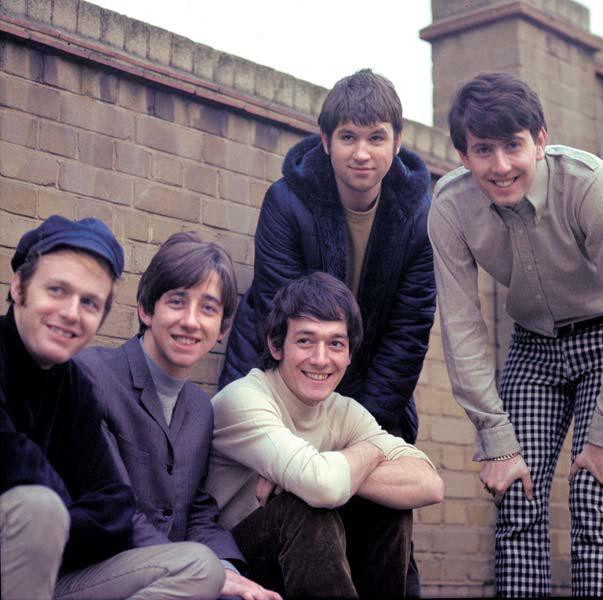Some songs feel like instant photographs—brief flashes that freeze a place, a time, and an attitude. The Hollies’ “Just One Look” is one of those snapshots. In a taut 2½ minutes, the band distills the buoyant optimism and vocal polish that defined so much of 1964’s British beat music. While it began life as a 1963 R&B hit for Doris Troy, The Hollies’ version became a UK smash, peaking at No. 2 and cementing the group’s reputation as peerless craftsmen of three-part harmony and ringing guitars.
Situated in its unique release context, “Just One Look” first appeared as a February 1964 single on Parlophone in Britain, later bundled on the Just One Look EP. Meanwhile, the US market experienced a different angle when it was folded into Here I Go Again, the retitled and re-sequenced version of their debut LP Stay with the Hollies in June 1964, specifically optimizing the tracklist around American singles.
This dual-market strategy reflected the band’s split success: a sparkling No. 2 hit in the UK, while in the US, it scraped the Hot 100 initially before a 1967 reissue propelled it higher to No. 44. This fascinating transatlantic journey highlights the uneven reception of British Invasion hits.
Doris Troy’s original version is a lesson in economy—voice at the forefront with a stomping rhythm and catchy hook. The Hollies’ take preserves the essence but injects their signature—stacked vocal harmonies and jangling guitars that bridged raw R&B to shimmering Merseybeat. Critics often praise Allan Clarke’s commanding lead, backed by Graham Nash and Tony Hicks’ tight three-part blend. Bassist Eric Haydock and drummer Bobby Elliott anchor the groove with elegance and crispness.
Recorded at the legendary EMI, London (Abbey Road) studios, producer Ron Richards’ expert touch ensured the band’s harmonies and energy shone without overdoing it. The arrangement is a masterpiece of restraint: lead vocals are clear and immediate; guitars strike articulate, bright tones; the bass and drums provide a tight, essential foundation; and handclaps and tambourine add the classic beat-group lift—all without overloading the sound with reverb or unnecessary effects.
“Just One Look” moves through AABA-like structure, with verses that are clipped and conversational and choruses that bloom with triadic harmonies acting like a welcoming call-and-response conversation. The turnaround guitar figures give emotional depth and reset the ear in an exquisitely timed 2:31 performance.
On a modern stereo system, the song still leaps out, thanks to Ron Richards’ balance—center-weighted mono placing voice and guitars with equal prominence. Compression is light, letting drums and tambourine remain lively, making this a truly timeless track that sounds just as fresh today.
Flipping the single reveals “Keep Off That Friend of Mine,” credited to Bobby Elliott and Tony Hicks, signaling the band’s rapid growth in songwriting behind their early covers. This B-side, also on the US LP, further showcases the calculated marketing strategy making band’s singles and B-sides accessible to American audiences.
The vocal chemistry between Clarke, Nash, and Hicks is legendary—a blend as disciplined as it is athletic. Nash’s high harmonies add shimmer while Hicks ensures smooth mid-register grounding. This precision blend has been likened less to typical British Invasion acts and more to a small horn section, with the unique breath and grit of rock vocalists.
Why does “Just One Look” endure? Because it embraces melody over mechanics. The direct lyricism—love at first sight—is matched by an arrangement that cuts swiftly and deliberately to a euphoric chorus. It embodies simplicity and immediacy, likened to a perfect haiku of pop music.
The song’s resilience is also evident in its many reinterpretations. Linda Ronstadt’s late-70s cover brought a glossy California pop sheen, proving the song’s modular architecture and adaptability. Its frequent use in film, TV, and commercials across eras sustains its appeal for new generations.
Take note moment by moment: the opening guitar and drums set a confident pace; the chorus lifts the title line with a vibrant harmony; the middle-eight gives subtle rhythmic reinforcement; and the outro layers vocal rounding that keeps the mood uplifting.
Fans of country and classical music will appreciate the song’s economy and voice-leading craft—qualities reminiscent of the Everly Brothers or Bach chorales, yet never academic or stilted. The Hollies’ chord distribution is textbook smart, offering a visible, moving triadic flow.
For those captivated by this golden age of British harmonies, explore their other gems like “Here I Go Again,” “Look Through Any Window,” and peer acts like The Searchers and The Zombies. Each shares the clean-edged tenderness and sophisticated harmonies that define this era.
In the words of music historians, “Just One Look thrives because it understands the physics of pop: melody, hook, harmony, and a tidy yet muscular band arrangement.” Their reimagining of strong material was not mere mimicry but an art form enhanced by their skillful interpretation and precise harmony work. The guitar-driven character remains vivid, bridging R&B roots and pop polish in a crisp, melodic, and lean performance.
This track is a compelling reminder: in a world of overcomplication, sometimes the direct and uncluttered path makes the most unforgettable music. If you’re just beginning to explore The Hollies, “Just One Look” is the essential starting point—a beacon leading you through an extraordinary catalog of three-minute masterpieces, each chorus more engaging than the last.
